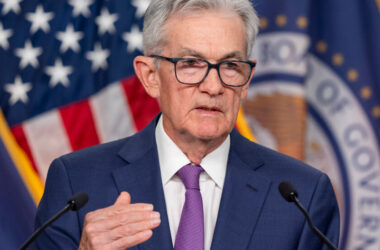In March 2018, a day after announcing sweeping tariffs on metals imported from America’s allies and adversaries alike, President Donald J. Trump took to social media to share one of his central economic philosophies: “Trade wars are good, and easy to win.”
As president, Mr. Trump presided over the biggest increase in U.S. tariffs since the Great Depression, hitting China, Canada, the European Union, Mexico, India and other governments with stiff levies. They hit back, imposing tariffs on American soybeans, whiskey, orange juice and motorcycles. U.S. agricultural exports plummeted, prompting Mr. Trump to send $23 billion to farmers to help offset losses.
Now, as he runs for president again, Mr. Trump is promising to ratchet up his trade war to a much greater degree. He has proposed “universal baseline tariffs on most foreign products,” including higher levies on certain countries that devalue their currency. In interviews, he has floated plans for a 10 percent tariff on most imports and a tariff of 60 percent or more on Chinese goods. He has also posited cutting the federal income tax and relying on tariffs for revenue instead.
Mr. Trump, who once proclaimed himself “Tariff Man,” has long argued that tariffs would boost American factories, end the gap between what America imported and what it exported and increase American jobs.
His first round of levies hit more than $400 billion worth of imports, including steel, solar panels, washing machines and Chinese goods like smart watches, chemicals, bicycle helmets and motors. His rationale was that import taxes would revive American manufacturing, reduce reliance on foreign goods and allow U.S. companies to better compete against cheap products from China and other countries.
Economists say the tariffs did reduce imports and encouraged U.S. factory production for certain industries, including steel, semiconductors and computer equipment. But that came at a very high cost, one that most likely offset any overall gains. Studies show that the tariffs resulted in higher prices for American consumers and factories that depend on foreign inputs, and reduced U.S. exports for certain goods that were subject to retaliation.
Mr. Trump is now envisioning taxing perhaps 10 times as many imports as he did during his first term, an approach that economists say could trigger a trade war that drives up already high prices and plunges the U.S. into a recession.
David Autor, an economics professor at the Massachusetts Institute of Technology, said the proposals would have “a very large effect on prices almost immediately.”
“I don’t think they’ll do it,” Mr. Autor said. “It could easily cause a recession.”
In a recent letter, 16 Nobel Prize-winning economists wrote that they were “deeply concerned” about the risks a second Trump administration posed to the economy, inflation and the rule of law.
“We believe that a second Trump term would have a negative impact on the U.S.’s economic standing in the world and a destabilizing effect on the U.S.’s domestic economy,” they wrote.
Mr. Trump and his supporters have a much more positive view of tariffs, arguing that they serve as leverage with foreign governments, reduce the trade deficit with China and result in the growth of U.S. manufacturing jobs.
“I happen to be a big believer in tariffs because I think tariffs give you two things: They give you economic gain, but they also give you political gain,” Mr. Trump said on a recent podcast.
Karoline Leavitt, the Trump campaign national press secretary, said in a statement that “the American people don’t need worthless out-of-touch Nobel Prize winners to tell them which president put more money in their pockets.”
“President Trump built the strongest economy in American history,” she said. “In just three years, Joe Biden’s out-of-control spending created the worst inflation crisis in generations.”
Jamieson L. Greer, a partner in the international trade team at King & Spalding, who was involved with China trade negotiations during the Trump administration, said the view of Trump officials was that tariffs “can help support U.S. manufacturing jobs in particular, especially to the extent that they’re remediating an unfair trade practice.”
China has long engaged in policies that disadvantage American workers, but other countries also have unfair trade and tax policies or misaligned currencies, Mr. Greer said.
“If you level out that playing field, it makes it so that Americans don’t have to compete unfairly,” he said.
Mr. Trump’s tariffs have domestic supporters among the industries that have benefited from them. And President Biden gave them his own stamp of approval by choosing to keep Mr. Trump’s China tariffs in place while adding some of his own, including on electric cars, steel and semiconductors.
But some of the industries that were hit hardest by Mr. Trump’s trade wars are not looking forward to a sequel. Executives in sectors like retail and spirits worry that another round of tariffs could reignite tensions, raise their costs and again close off critical markets abroad.
Spirit exports to Europe declined by 20 percent after the European Union imposed a 25 percent retaliatory tariff on American whiskey in response to the Trump administration’s tariffs on steel and aluminum. And the China tariffs increased the prices that retailers had to pay for their products, forcing them to either raise prices for their customers or cut into their profits.
“We need a trade policy, not just more tariffs,” said David French, executive vice president of government relations at the National Retail Federation. His group, which represents department stores, e-commerce sites and grocers, ran a television ad campaign opposing the Trump tariffs in 2018. “All they’ve done is add friction to the supply chain and cost consumers $220 billion.”
“Former President Trump looks at trade as some sort of zero-sum game — if you win, I lose and vice versa,” Mr. French said. “That’s really not the way trade works.”
The power of tariffs to help or hinder exports is clear in industries that eventually won a reprieve. In 2021, whiskey tariffs were temporarily suspended as part of a deal the Biden administration made with the European Union. American whiskey exports to the bloc rose from $439 million in 2021 to $705 million last year.
Chris Swonger, the chief executive of the Distilled Spirits Council of the United States, said he was hopeful that, if re-elected, Mr. Trump would appreciate that strong exports of American spirits would help achieve his goal of reducing the trade deficit. The lobbying group wants the E.U. tariff suspension, which expires next March, to be extended.
“For President Trump, obviously we appreciate and respect his efforts to reduce the trade deficit,” said Mr. Swonger, who has made his case to Trump campaign officials. “Imposing tariffs on distilled spirits would be counter to reducing the trade deficit.”
Research suggests the tariffs did accomplish their goal of increasing domestic production in the industries they protected, but did so by imposing other costs on the U.S. economy.
One nonpartisan government study found that the tariffs on foreign steel and aluminum increased U.S. production of those metals by $2.2 billion in 2021. But American factories that use steel and aluminum to make other things, like cars, tin cans and appliances, had to pay higher costs for their materials, and that reduced the output of those factories by $3.5 billion in the same year.
Studies suggest the tariffs also had a mixed record when it came to jobs. In a recent paper, Mr. Autor and other economists found that the cumulative effect of Mr. Trump’s trade policies and other countries’ retaliation was slightly negative for American jobs, or at best a wash.
In terms of inflation, studies have estimated that American households faced higher prices as a result of the tariffs — from several hundred dollars to more than $1,000 annually.
But economists say consumers probably did not associate the higher prices they paid with the tariffs, given that inflation was low throughout Mr. Trump’s tenure and the economy was strong.
While the economy remains robust, prices have spiked since 2021, and inflation remains elevated. That could make tariff-induced price increases more obvious and more painful this time around.
A recent analysis by the Peterson Institute of International Economics found that if Mr. Trump did impose a 10 percent tariff on all goods and a 60 percent tariff on China, it would cost a typical household in the middle of the income distribution about $1,700 in increased expenses each year.
Another analysis, by the right-leaning American Action Forum, estimated that a 10 percent tariff could impose additional annual costs of up to $2,350 per American household. Adding a 60 percent tariff on China would add another $1,950 to U.S. household costs.
The burden of those tariffs would fall more heavily on poorer households, because they spend a larger share of their income on everyday products.
That could ultimately backfire on Mr. Trump, given that voter concerns about inflation are top of mind.
As he waited in line to attend Mr. Trump’s rally on Saturday in Philadelphia, Paul Rozick, an electrical warehouse manager from Bensalem, Pa., said high grocery and gas prices had outpaced his pay raises.
“Inflation is going up like 20 percent, but our paychecks go up like 2 percent,” Mr. Rozick said. “I’ve got less money in the bank because I’m spending more money when I walk out the door.”



